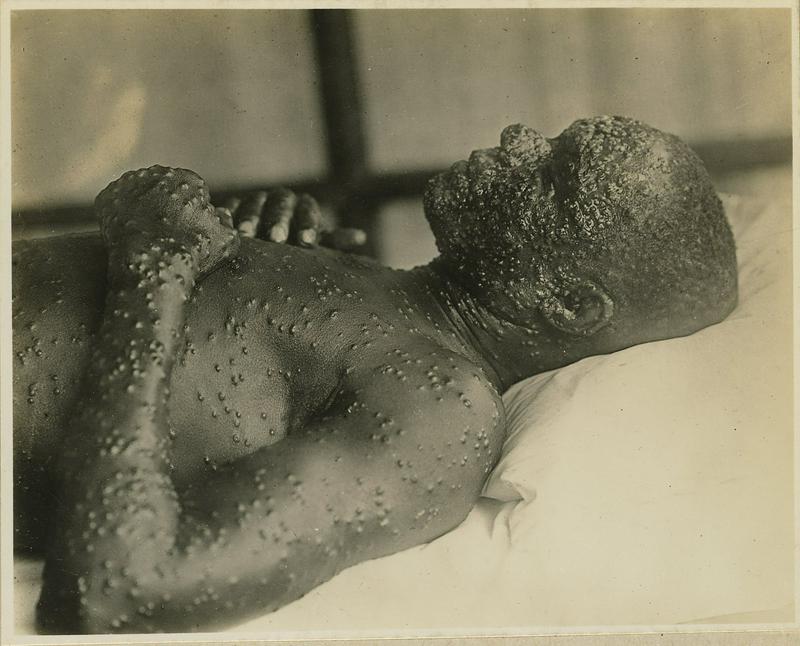Onesimus: The Slave Who Brought Inoculation To America And Saved The Country
By | October 10, 2019

Smallpox was a singularly devastating disease in the 18th century, killing up to 30% of those infected within mere days or weeks of contamination. The virus was unique to other epidemics, at least in how people understood the disease. It was obviously spread from person to person without any needed carrier, as in the case of rats and the bubonic plague. It took down every kind of person, "both male and female, both old and young, both strong and weak, both white and black." It was responsible for reducing the Native American population by over 50% in the centuries after European contact. Initially, there was little to be done about the killer disease. Their best guess at treatment was bloodletting, which was kind of the duct tape of 18th-century medicine, so usually, they were resigned to managing symptoms.
There was one long-practiced medical tradition that actually seemed to work, but the problem was getting people to agree to it. While inoculation was common knowledge in most of the Middle East and parts of Asia prior to the 18th century, it was largely written off in America. It was practiced almost exclusively by enslaved men and women whose credibility within the Western medical community was about what you'd expect it to be. Just to recap: bloodletting=good, vaccines=dumb.

That would change in 1721 when a particularly horrific outbreak of smallpox occurred in Boston, Massachusetts. Cotton Mather, an acclaimed man of science who was already somewhat famous for his involvement in the Salem Witch Trials, just so happened to be living there, along with a West African man by the name of Onesimus who was enslaved to Mather. It was he who explained the concept of inoculation to Mather. As Mather wrote in a letter to John Woodward:
"[I asked] whether [Onesimus] ever had Small-Pox; he answered, both, Yes, and, No; and then told me, that he had undergone an Operation, which had given him something of Small-Pox, & would forever preserve him from it ... He described the Operation to me, and shew'd me in his Arm Scar, which it had left upon him; and his Description of it, made it the same, that afterwards I found related unto you by your Timonius."
What is now an accepted practice in the Western medical community caused quite a controversy when Mather began using the technique and proposing it to others. Newspapers like The New England Courant posted letters to the editor from people on both sides of the issue. Anti-inoculators wrote about their vehement distrust of the method, calling into question the logic of infecting an otherwise-healthy body with the disease, no matter how minor the resulting outbreak. They accused doctors of covering up deaths related to the inoculations, one claiming that a doctor "in his Letter to the Royal Society, owns that he saw Two die that were Inoculated; but at the same Time would fain insinuate that they died of some other Distemper."

However conspiratorial their concerns may seem, it is important to note the difference between inoculation and the much safer method of vaccination that Edward Jenner would perfect in the late 1790s. Inoculation involved injecting a person in the arm with a small amount of the smallpox virus, while a vaccination infects them with a similar but much less lethal virus (cowpox), allowing their immune system adapt. The difference is significant in understanding the debate because, while the accidental spreading of cowpox would ultimately help the community, a person inoculated with smallpox could infect others for days after the procedure. Detractors worried whether inoculation would "control [or] contribute to the spread" of the disease. Still, the method was by far the most effective method the colonies had in controlling the virus.
Arguably, the practice of inoculation is why the United States became a nation in the first place. During the Revolutionary War, more colonial soldiers died of smallpox than died from battling the British Army. Smallpox was without a doubt the biggest existential threat facing the Continental Army.

A rebel in the truest sense, the revolutionary Marquis de Lafayette had himself illegally inoculated to the virus before leaving France. Like Cotton Mather, it was likely his privileged position that legitimized his testimony to the success of the practice in the eyes of white Americans, particularly his "adopted" father, George Washington, who initially opposed the idea but inoculated his entire army in 1777. (Washington had been spared the disease because he survived smallpox as a child and thus was immune to the virus in his adult years.) With the correct use of inoculation, the mortality rate of smallpox dropped down to around just 2%.
Inoculation undoubtedly saved thousands of American lives, and yet, when you Google smallpox or the Boston epidemic, it is the name Cotton Mather that turns up time and time again. While there is little known about Onesimus outside of Mather's few journal entries, it is important that we remember his name and the invaluable contribution his ancestral knowledge gave to the colonial medical field. The next time you're not dying of smallpox (which is always, because thankfully, the virus was finally eradicated in 1980), thank your good friend Onesimus, the man that brought inoculation to the people and probably saved our fledgling nation from total and complete catastrophe.

